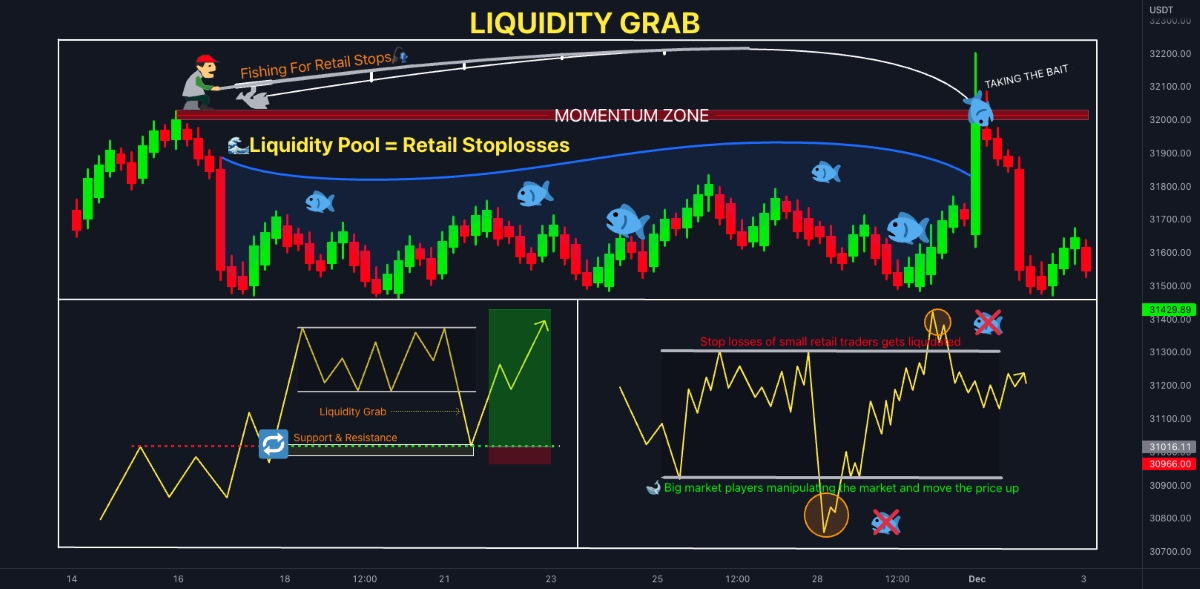

Finance
What Is Liquid Stocks
Published: January 19, 2024
Learn all about liquid stocks in the world of finance and discover how they can help you diversify your investment portfolio.
(Many of the links in this article redirect to a specific reviewed product. Your purchase of these products through affiliate links helps to generate commission for LiveWell, at no extra cost. Learn more)
Table of Contents
Introduction
Welcome to the world of stocks! As an investor, understanding the concept of liquidity is crucial for making informed decisions in the stock market. When we talk about liquid stocks, we are referring to stocks that have high trading volumes and are easily bought and sold without significantly impacting their price. In simple terms, it means that there is enough interest and activity in these stocks, making them readily available for trading.
Liquidity plays a vital role in the stock market as it ensures that investors can enter or exit positions quickly and at fair prices. It provides flexibility and reduces the risk of being stuck in a particular stock that is difficult to sell. Additionally, liquidity also impacts market efficiency by facilitating the smooth functioning of transactions.
There are several factors that influence the liquidity of stocks, such as the market capitalization of the company, the number of shares outstanding, the trading volume, and the bid-ask spread. Higher market capitalization and trading volume generally indicate higher liquidity, as there is greater interest and activity in those stocks.
Investors need to consider the importance of liquidity when formulating their investment strategies. Liquidity allows for easier price discovery and helps to minimize the impact of transaction costs. It also provides the ability to quickly respond to changes in market conditions and execute investment decisions without delay.
Measuring the liquidity of stocks is essential to identify which stocks are more liquid than others. Metrics such as trading volume, bid-ask spread, and average daily range can be used to assess liquidity. By analyzing these metrics, investors can determine the ease of buying and selling a particular stock.
Trading liquid stocks offers various advantages, such as better execution of trades, narrower bid-ask spreads, and the ability to enter or exit positions swiftly. Additionally, the higher liquidity makes it easier to implement trading strategies like scalping or day trading, where quick buying and selling are key.
However, it is also important to understand the risks associated with trading illiquid stocks. These stocks have low trading volumes, wide bid-ask spreads, and may experience significant price fluctuations. As a result, selling illiquid stocks can be challenging, and investors may face difficulties in finding buyers at desired prices.
To conclude, liquidity is of paramount importance in the stock market. Understanding the concept of liquid stocks and their impact on investment strategies can help investors make more informed decisions. By considering the factors affecting liquidity and employing appropriate trading strategies, investors can navigate the market efficiently while minimizing risks.
Definition of Liquid Stocks
Liquid stocks are securities that are easily tradable in the stock market due to their high trading volumes and active participation from buyers and sellers. These stocks have a sufficient number of shares available for trading, allowing investors to enter or exit positions without significantly impacting their prices.
The liquidity of a stock is determined by the market’s ability to absorb large volumes of buying or selling activity without causing significant price fluctuations. In other words, highly liquid stocks have enough market depth, with a large number of available buyers and sellers ready to transact at any given time.
Market liquidity is driven by factors such as the market capitalization of the company, the number of shares outstanding, and the trading volume. Larger companies with higher market capitalization tend to have more liquid stocks as they attract more interest and activity from investors.
Additionally, the trading volume of a stock is a crucial indicator of its liquidity. Stocks with significant trading volume generally have higher liquidity because there is a larger pool of participants actively buying and selling those shares.
The bid-ask spread is another important aspect to consider when assessing the liquidity of a stock. The bid price represents the highest price at which buyers are willing to purchase the stock, while the ask price represents the lowest price at which sellers are willing to sell the stock. A smaller bid-ask spread indicates higher liquidity as there is less of a price discrepancy between buyers and sellers.
It is essential to note that liquidity can vary across different stocks and sectors. Some sectors or individual stocks may have lower liquidity due to factors such as limited investor interest or low trading volumes. These illiquid stocks may experience wider bid-ask spreads and may be more challenging to buy or sell.
Overall, liquid stocks offer numerous advantages to investors. They provide the ability to enter or exit positions quickly at fair prices, allow for better execution of trades, and ensure minimal impact from transaction costs. Investors should consider the liquidity of a stock when formulating their investment strategies, as it plays a significant role in determining the ease and efficiency of trading in the stock market.
Factors Affecting Liquidity in the Stock Market
Liquidity in the stock market is influenced by various factors that impact the ease and efficiency of buying and selling stocks. Understanding these factors is crucial for investors to assess the liquidity of stocks and make informed investment decisions. Here are some key factors affecting liquidity in the stock market:
1. Market Capitalization: The market capitalization of a company, which is calculated by multiplying the number of outstanding shares by the current stock price, plays a significant role in determining stock liquidity. Generally, larger companies with higher market capitalization tend to have more liquid stocks because they attract more interest and participation from investors.
2. Trading Volume: Trading volume refers to the number of shares that are bought and sold in a given period. Higher trading volume indicates higher liquidity as it signifies more interest and activity in those stocks. Stocks with significant trading volume have a larger pool of participants, making it easier for buyers and sellers to transact without causing significant price fluctuations.
3. Bid-Ask Spread: The bid-ask spread is the difference between the highest price that buyers are willing to pay (bid) and the lowest price that sellers are willing to accept (ask). A smaller bid-ask spread indicates higher liquidity, as there is less of a price difference between buyers and sellers. A wider bid-ask spread can be a sign of lower liquidity, making it more challenging to execute trades at desired prices.
4. Market Depth: Market depth refers to the extent of available buy and sell orders at various price levels. A stock with deep market depth has a large number of buyers and sellers at different price levels, indicating high liquidity. Conversely, shallow market depth suggests lower liquidity, as there may be insufficient orders to accommodate large buying or selling activity without significant price impact.
5. News and Market Sentiment: News events and overall market sentiment can significantly impact stock liquidity. Positive news or optimistic market sentiment can attract more buyers, increasing trading activity and liquidity. Conversely, negative news or bearish sentiment can cause a decrease in liquidity as investors may become cautious and less willing to buy or sell stocks.
6. Stock Exchange: Different stock exchanges may have varying levels of liquidity due to factors such as the number of listed companies, trading regulations, and investor participation. Stock exchanges with a large number of listed companies and higher investor participation tend to have greater liquidity compared to smaller or less active exchanges.
These factors highlight the dynamic nature of stock market liquidity. Investors should consider these factors when assessing the liquidity of stocks to ensure they can easily enter or exit positions, execute trades at fair prices, and manage their investment portfolios efficiently.
Importance of Liquidity for Investors
Liquidity plays a crucial role for investors in the stock market, providing a range of benefits that are essential for making informed investment decisions. Understanding the importance of liquidity is key to effectively managing investment portfolios. Here are some reasons why liquidity is important for investors:
1. Ease of Buying and Selling: Liquidity ensures that investors can easily buy or sell stocks without significant challenges or delays. Investors can quickly enter or exit positions as market conditions change or investment goals evolve. This flexibility allows investors to take advantage of investment opportunities or adjust their portfolios in a timely manner.
2. Fair Price Discovery: High liquidity in the stock market facilitates fair price discovery. When a stock has sufficient liquidity, it means that there are many buyers and sellers actively participating in trading. This increased competition leads to narrower bid-ask spreads and ensures that the prevailing market price of the stock is fair and transparent. Investors can rely on these prices to make informed decisions and avoid potential manipulation or distortions.
3. Reduced Impact on Prices: Liquidity helps minimize the impact of individual trades on stock prices. In illiquid markets, even a small buy or sell order can significantly influence the stock price. However, in highly liquid markets, larger buy or sell orders have less impact on prices due to the presence of a large pool of buyers and sellers. This allows investors to execute trades without substantially impacting prices and reduces the risk of slippage.
4. Lower Transaction Costs: Liquid stocks generally have narrower bid-ask spreads, which translates to lower transaction costs. Bid-ask spreads represent the difference between the highest price that buyers are willing to pay and the lowest price that sellers are willing to accept. Smaller spreads mean that investors can buy stocks closer to the prevailing market price and sell them at a price closer to the market value, resulting in lower transaction costs and improved profitability.
5. Flexibility in Trading Strategies: Liquidity enables investors to implement various trading strategies effectively. For example, day traders and scalpers rely on quick buying and selling of stocks to take advantage of short-term price fluctuations. By trading liquid stocks, these strategies can be executed efficiently, allowing for rapid entry and exit positions without facing significant obstacles.
6. Risk Management: Liquidity is crucial for risk management purposes. It allows investors to promptly exit positions in case of adverse market conditions or unexpected events. Having the ability to exit a position quickly can help minimize losses or capture gains before they diminish. Moreover, liquidity allows investors to diversify their portfolios by easily reallocating funds into different stocks, sectors, or asset classes.
Overall, liquidity provides investors with the necessary flexibility, transparency, and efficiency in the stock market. It allows for easy buying and selling, fair price discovery, reduced impact on prices, lower transaction costs, and the implementation of various trading strategies. By understanding and considering liquidity, investors can navigate the market more effectively and make better-informed investment decisions.
Measuring Liquidity in Stocks
Measuring liquidity in stocks is crucial for investors to assess the ease of buying and selling a particular stock. By analyzing various metrics, investors can determine the level of liquidity and make informed investment decisions. Here are some common methods used to measure liquidity in stocks:
1. Trading Volume: Trading volume is one of the primary indicators used to measure liquidity. It refers to the total number of shares traded in a given period. Stocks with higher trading volumes generally indicate higher liquidity, as there is more interest and activity from investors. Investors can assess a stock’s liquidity by comparing its trading volume to the average daily volume and the volume of other stocks in the same sector or market.
2. Bid-Ask Spread: The bid-ask spread reflects the difference between the highest price that buyers are willing to pay (bid) and the lowest price that sellers are willing to accept (ask). A narrow bid-ask spread indicates higher liquidity, as there is minimal price discrepancy between buyers and sellers. Conversely, a wider bid-ask spread suggests lower liquidity and may result in higher transaction costs for investors.
3. Average Daily Range: The average daily range measures the average difference between the highest and lowest prices at which a stock trades within a day. A larger average daily range can suggest higher volatility and potentially lower liquidity. Investors who prefer less volatile stocks may opt for those with smaller average daily ranges as they typically exhibit more stable prices and better liquidity.
4. Market Depth: Market depth refers to the level of available buy and sell orders at different price levels. It indicates the depth of the market and the number of buyers and sellers willing to transact at various prices. Stocks with deep market depth usually have better liquidity, as there are more sizable orders available near the prevailing market price. Analyzing market depth through Level II quotes can provide insights into a stock’s liquidity profile.
5. Price Impact: Price impact measures how much a large buy or sell order affects the stock’s price. In liquid stocks, large buy or sell orders have minimal impact on prices, indicating higher liquidity. Conversely, illiquid stocks may experience significant price fluctuations in response to large orders, suggesting lower liquidity.
6. Turnover Ratio: The turnover ratio calculates the percentage of stocks traded relative to the total number of shares outstanding. A higher turnover ratio signifies higher liquidity, as it indicates the frequency of buying and selling activity in relation to the available shares. Investors can compare a stock’s turnover ratio to industry averages or historical data to assess its liquidity.
By considering these liquidity metrics, investors can gain insights into the ease and efficiency of trading a particular stock. It is important to combine multiple indicators to obtain a comprehensive view of liquidity as some measures may have limitations or vary between different market conditions. Analyzing liquidity can help investors make more informed decisions by ensuring they have sufficient information to gauge the potential risks and benefits associated with trading a specific stock.
Strategies for Trading Liquid Stocks
Trading liquid stocks offers numerous advantages for investors, including better execution, narrower bid-ask spreads, and the ability to quickly enter or exit positions. To make the most of these benefits, investors can adopt various strategies tailored to trading in liquid stocks. Here are some strategies to consider:
1. Momentum Trading: Momentum trading involves identifying stocks that are experiencing significant price movements and entering positions to ride the momentum. In liquid stocks, price movements tend to be more pronounced and faster, providing ample opportunities for momentum traders to capture short-term gains. Traders can use technical analysis tools and indicators to identify stocks with strong momentum and execute trades accordingly.
2. Scalping: Scalping is a short-term trading strategy that aims to profit from small, rapid price fluctuations. Traders who employ this strategy capitalize on the liquidity and tight bid-ask spreads of liquid stocks to quickly enter and exit positions. Scalpers typically hold positions for only a few minutes or even seconds, relying on high trading volumes and frequent price movements for profitability.
3. Day Trading: Day trading involves opening and closing positions within the same trading day, capitalizing on intraday price movements. Liquid stocks are ideal for day trading due to their high trading volumes and tight spreads, enabling traders to make multiple trades throughout the day. Traders can use technical analysis, chart patterns, and real-time market data to identify entry and exit points, aiming to profit from price fluctuations within a single trading session.
4. Swing Trading: Swing trading is a strategy that aims to capture intermediate-term price swings in the market. Traders who employ this strategy typically hold positions for a few days to several weeks. Liquid stocks provide the necessary liquidity and volume for swing trading, allowing traders to easily enter and exit positions at desired prices. Swing traders use technical analysis to identify trends and swing points, making informed buy or sell decisions based on these patterns.
5. Volume Breakout: The volume breakout strategy focuses on trading stocks that experience a significant increase in trading volume, indicating a potential shift in market sentiment or a breakout from a consolidation phase. Traders look for stocks with high trading volume accompanied by price movements beyond key resistance or support levels. In liquid stocks, higher trading volumes are more reliable, providing confirmation for potential breakout opportunities.
6. Fundamental Analysis: While liquidity is often associated with short-term trading strategies, it is also essential for long-term investors who base their decisions on fundamental analysis. Liquid stocks enable long-term investors to accumulate or sell positions gradually without causing significant price impact. Additionally, liquidity allows investors to exit positions swiftly if there are changes in the company’s fundamentals or market conditions.
When employing these strategies, it is crucial for traders and investors to stay updated with market news, monitor price movements, and use appropriate risk management techniques. It is recommended to practice these strategies with caution, considering one’s risk tolerance and financial goals.
Overall, trading liquid stocks can provide advantages such as better execution, tighter spreads, and quicker entry or exit. By adopting suitable strategies and utilizing the liquidity of these stocks, traders and investors can maximize their chances of success in the dynamic and fast-paced world of stock trading.
Risks Associated with Trading Illiquid Stocks
While trading liquid stocks offers benefits such as easy buy/sell execution and narrow bid-ask spreads, trading illiquid stocks carries its own set of risks. Illiquid stocks are characterized by low trading volumes, wider bid-ask spreads, and limited market activity. Traders and investors should be aware of these risks when considering trading illiquid stocks. Here are some key risks associated with trading illiquid stocks:
1. Difficulty Buying and Selling: Illiquid stocks lack the same level of market interest and activity as liquid stocks. As a result, buying or selling a significant number of shares in an illiquid stock can be challenging. It may take longer to find buyers or sellers, leading to delays and potentially unfavorable prices for trade execution. This can limit the ability to enter or exit positions swiftly, particularly when time-sensitive decisions need to be made.
2. Wider Bid-Ask Spreads: Illiquid stocks typically have wider bid-ask spreads compared to liquid stocks. The bid-ask spread is the difference between the highest price that buyers are willing to pay and the lowest price that sellers are willing to accept. A wider spread means that investors may have to pay a higher price to buy the stock or receive a lower price when selling, which can increase transaction costs and potentially reduce profits.
3. Increased Price Volatility: Illiquid stocks tend to have lower trading volumes, which makes them susceptible to higher price volatility. Even small buy or sell orders can cause significant price fluctuations. This increased volatility can result in larger price gaps between trades, making it challenging to accurately determine the fair market value of the stock. Traders may experience wider price slippage, where executed prices differ significantly from intended prices.
4. Limited Market Depth: Illiquid stocks often have limited market depth, meaning there is a scarcity of buyers and sellers at various price levels. Shallow market depth can result in low trading activity and reduced liquidity. Traders and investors may encounter situations where a limited number of shares are available at desirable prices, making it difficult to execute trades at desired levels. This can also make it harder to exit positions quickly, especially during times of market stress or heightened selling pressure.
5. Higher Risk of Price Manipulation: Due to the lower trading volumes and limited market activity, illiquid stocks are more susceptible to price manipulation. Market manipulators can potentially influence the stock’s price by placing small trades or spreading false information. This can lead to artificial price movements and distort the true value of the stock. Traders and investors should exercise caution when trading illiquid stocks and be aware of the risks associated with potential price manipulation.
6. Difficulty in Conducting Fundamental Analysis: Illiquid stocks often have limited news coverage and analyst attention, which can make it challenging to gather and analyze information necessary for fundamental analysis. It may be harder to assess the company’s financial health, industry trends, and other critical factors that influence stock valuations. This lack of information can increase the risks associated with making investment decisions in illiquid stocks.
Given these risks, it is important for traders and investors to exercise caution when trading illiquid stocks. It is advisable to thoroughly research and assess the liquidity and associated risks before engaging in trading activities. Traders and investors should also consider diversification and risk management strategies to mitigate the potential losses that can arise from trading illiquid stocks.
Conclusion
Liquidity is a critical aspect of the stock market that plays a significant role in the investment journey of traders and investors. Understanding the concept of liquid stocks and their impact is essential for making informed decisions. Liquid stocks, characterized by high trading volumes, tight bid-ask spreads, and active market participation, offer several advantages for market participants.
The importance of liquidity lies in its ability to provide ease of buying and selling, fair price discovery, reduced impact on prices, lower transaction costs, and flexibility in trading strategies. Liquidity allows investors to quickly enter or exit positions, adjust portfolios as market conditions change, and efficiently manage their trading activities.
There are various metrics to measure liquidity in stocks, including trading volume, bid-ask spread, average daily range, market depth, price impact, and turnover ratio. By considering these metrics, investors can assess the liquidity of stocks and make informed decisions based on their trading goals and risk tolerance.
Traders and investors can employ different strategies when trading liquid stocks, such as momentum trading, scalping, day trading, swing trading, volume breakout, and fundamental analysis. These strategies are tailored to take advantage of the benefits offered by liquid stocks, maximizing the potential for profitability and success in the market.
However, it is important to acknowledge the risks associated with trading illiquid stocks. These risks include difficulties in buying and selling, wider bid-ask spreads, increased price volatility, limited market depth, higher risk of price manipulation, and challenges in conducting fundamental analysis. Traders and investors should exercise caution when trading illiquid stocks and be aware of the potential risks involved.
In conclusion, understanding liquidity and its impact is vital for investors in navigating the stock market. By considering the factors affecting liquidity, adopting appropriate trading strategies, and managing the associated risks, traders and investors can make more informed decisions and enhance their chances of success in the dynamic and ever-changing world of stocks.














